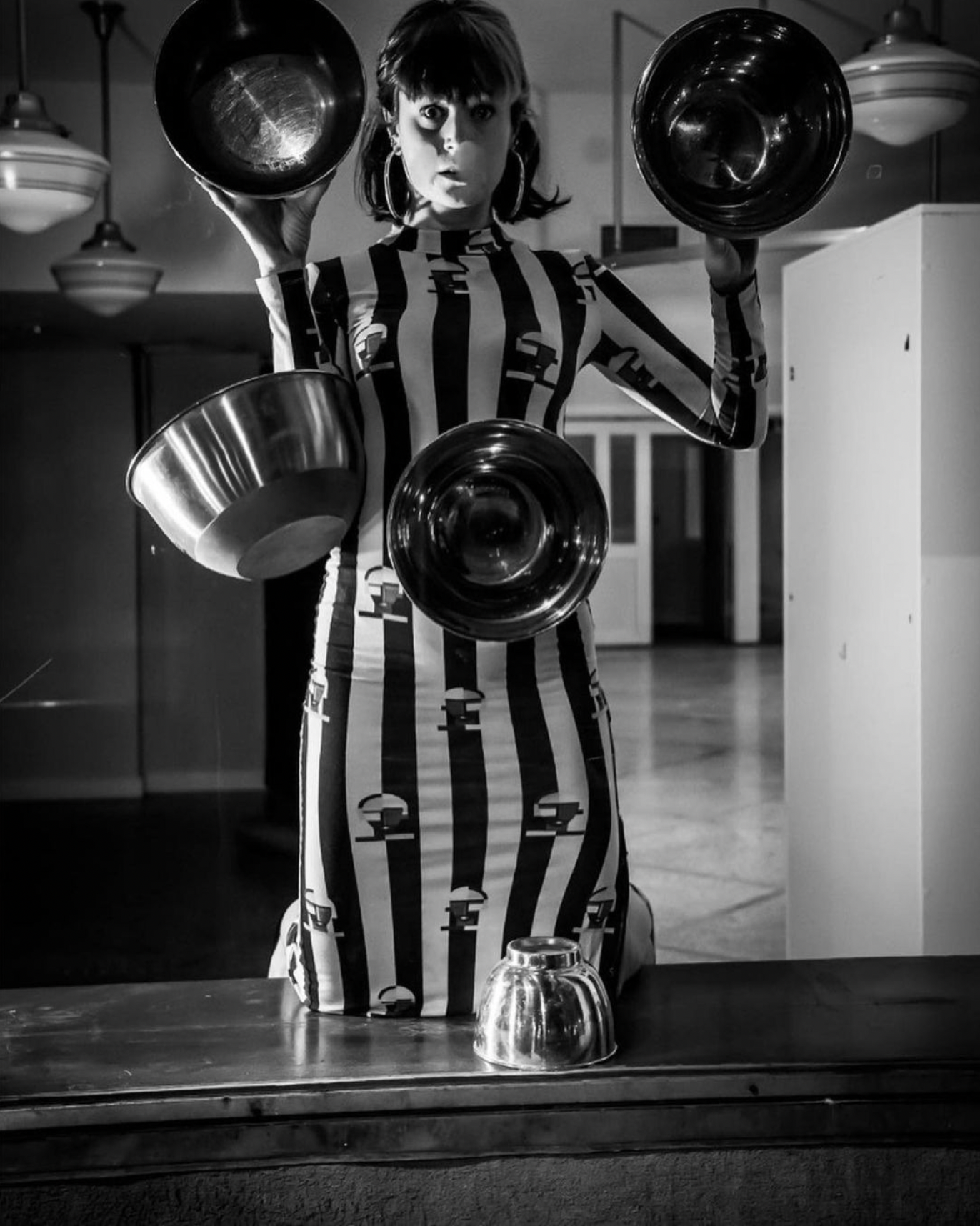REVIEW: Relative Intensity Noise at Elastic Arts Brings Actionism into a New Age of Clutter
Rin Peisert, image courtesy the artist and Elastic Arts.
REVIEW
Relative Intensity Noise
Elastic Arts
3429 W Diversey Ave #208
Chicago, IL 60647
By Levi Dayan
About a year ago, Chicago performance artist Rin Peisert was granted a curatorial residency at Elastic Arts, the end result of which became the quarterly performance series Relative Intensity Noise. The central aim of the series was to bring together performers from the performance and sound art fields and have them perform their individual work simultaneously as part of a continuous, longform collective performance. The performers are granted freedom to use the space in any way they choose, and the barrier between the artists and the audience is effectively reduced to nil. Each of these performances have taken place with minimal lighting and fog machines blasting in every corner, adding to the disorientation. One year later, it’s safe to say that every performance in the series has delivered an immersive, delirious mindfuck of an experience, one that is both challenging and engaging in equal order.
This past Saturday, for the final iteration of Relative Intensity Noise of the year, Peisert brought together a who’s who of collaborators spanning a wide variety of artistic backgrounds and
practices. Soft Slap, which consists of noisician extraordinaire Melon Sprout, digital artist Clark Woods, and saxophonist/performance artist Grace Devies, opened the night with a set of
primordial horn squawking (some of which were created by Sprout himself using ceramics) and noise fuckery. To me, the end result almost called to mind an alternative universe in which Jon Hassell ditched Brian Eno to join the LA Free Music Society. The sonic centerpiece of the evening was Chicago freak scene stalwart Ben Billington’s performance on modular synth,
which utilized Elastic’s legendary 16-channel audio configuration known as the CLEAT system. The music was pure delirium in hi-fi, with the multichannel set up giving Billington full range to instill a dancing-in-your-head effect in the audience. Closing out was Iowa City-based percussionist, sculptor and performance artist David Hurlin. Hurlin’s “instrument” was a self-made conglomerate of percussive elements that seemed to be perpetually collapsing in on itself, epitomizing the sense of danger that underpins Peisert’s approach to performance.
While the musicians played in succession, the performance artists, as always, performed continuously for the entire two hour duration of Relative Intensity Noise. In one corner of the room, Butoh artist Wannapa Eubanks claustrophobically navigated a miniature world littered with toy soldiers. Close by, in a preacher’s robes, R.A. Washington - member of Cleveland soul deconstructionists Mourning [A] BLKstar and first-time performance artist - gave a hushed Baptist sermon informed by his experience as a child preacher in El Paso. Eubanks and Washington played off each other perfectly, both reflecting the spiritual mayhem of a time of unprecedented destruction and warfare. On the other side of the room, Peisert and her performing partner Elena Katsulis were face down on top of a mirror with their arms tied together for two hours. The performance interrogated how audiences react to performance, placing them in a situation in which they bore witness to the two’s struggle with no clear understanding of how to interact. Perhaps the wildest performance came from Érika Ordosgoitti and Amaya, the latter of whom curates the noted performance art space NoNation. In a slow burn, the two artists, both of whom wore white lab coats, set up two ladders with a TV displaying different camera angles of their setup. Flesh was hung between the two ladders, and a table display that hosted an array of medical equipment and a model of a human brain sat underneath. At the very end of the evening, as the lights went off, Amaya slowly walked across the room with a flashlight revealing the message on the back of their lab coat: United Slaves of Amnesia.
As a curatorial resident, Rin Peisert has brought the kind of intense, deeply physical performance art typically only found at house venues such as the aforementioned NoNation and TriTriangle to Elastic Arts. The Relative Intensity Noise series has the influence of Fluxus, but it reflects the present age of perpetual clutter more so than anything Cagean. These performances make zero space for silence, but they unfold less like an explosive noise inferno and more like a continuously unraveling ball of energy and sound. It is not yet clear if the series will continue at Elastic into 2024 or if it will be moved to another space. What is clear is that Peisert has no plans to stop pushing the boundaries of performance any time soon.
Like what you’re reading? Consider donating a few dollars to our writer’s fund and help us keep publishing every Wednesday.



